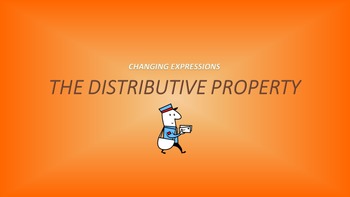Distributive Property: Changing Expressions
David Purnell
23 Followers
Grade Levels
6th
Subjects
Resource Type
Standards
CCSS6.NS.B.4
Formats Included
- PPTX
Pages
22 slides
David Purnell
23 Followers
Description
This 22-slide PowerPoint presentation demonstrates how to use common factors and the distributive property to change an expression. Addition problems involving whole numbers are changed into a multiplication problem which is the product of the greatest common factor of the addends and the sum of two whole numbers that have no GCF other than "1". The content is based on 6th grade Common Core standard: CCSS.Math.Content.6.NS.B.4. The presentation takes about 30 minutes, but time considerations depend on teacher stopping points and student participation. It can be used with a full class or individuals that may have missed a lesson or need remediation. The presentation makes for a great resource to place on your teacher website as well.
Instruction begins with demonstration of the distributive property through use of models and the language of multiplication to help students understand the property better. Then the process of changing an expression is detailed in steps. After a summary, a practice problem along with the solution is given to gauge understanding.
For more products like these, please visit my store at:
https://www.teacherspayteachers.com/store/David-Purnell
Instruction begins with demonstration of the distributive property through use of models and the language of multiplication to help students understand the property better. Then the process of changing an expression is detailed in steps. After a summary, a practice problem along with the solution is given to gauge understanding.
For more products like these, please visit my store at:
https://www.teacherspayteachers.com/store/David-Purnell
Total Pages
22 slides
Answer Key
N/A
Teaching Duration
30 minutes
Report this resource to TPT
Reported resources will be reviewed by our team. Report this resource to let us know if this resource violates TPT’s content guidelines.
Standards
to see state-specific standards (only available in the US).
CCSS6.NS.B.4
Find the greatest common factor of two whole numbers less than or equal to 100 and the least common multiple of two whole numbers less than or equal to 12. Use the distributive property to express a sum of two whole numbers 1–100 with a common factor as a multiple of a sum of two whole numbers with no common factor. For example, express 36 + 8 as 4 (9 + 2).


